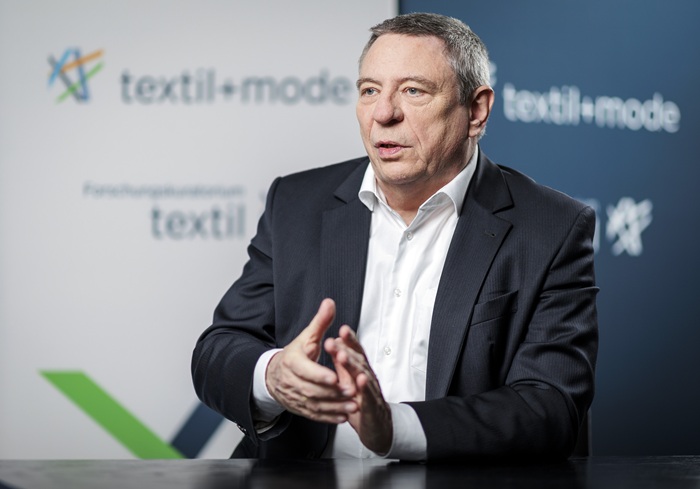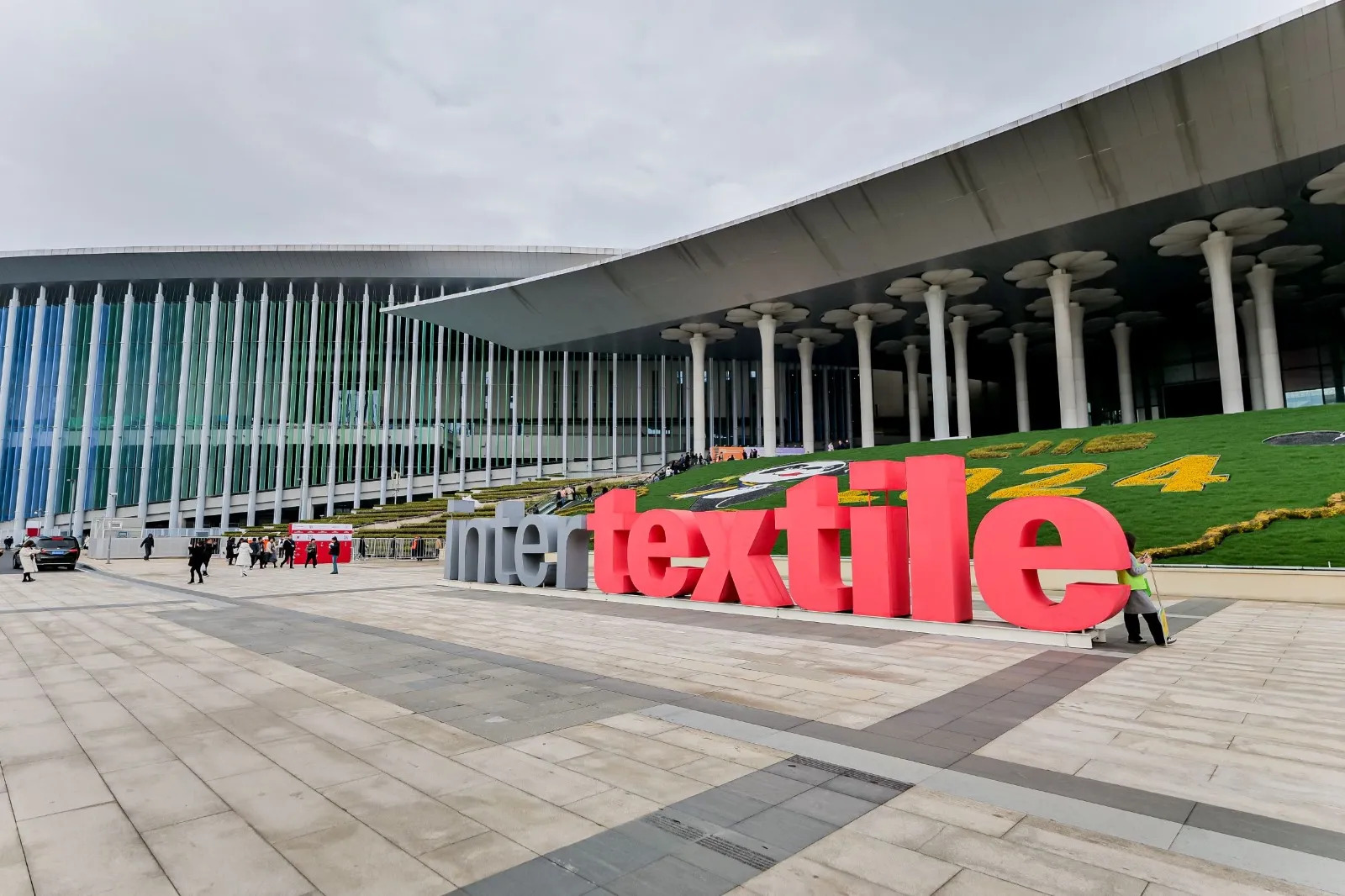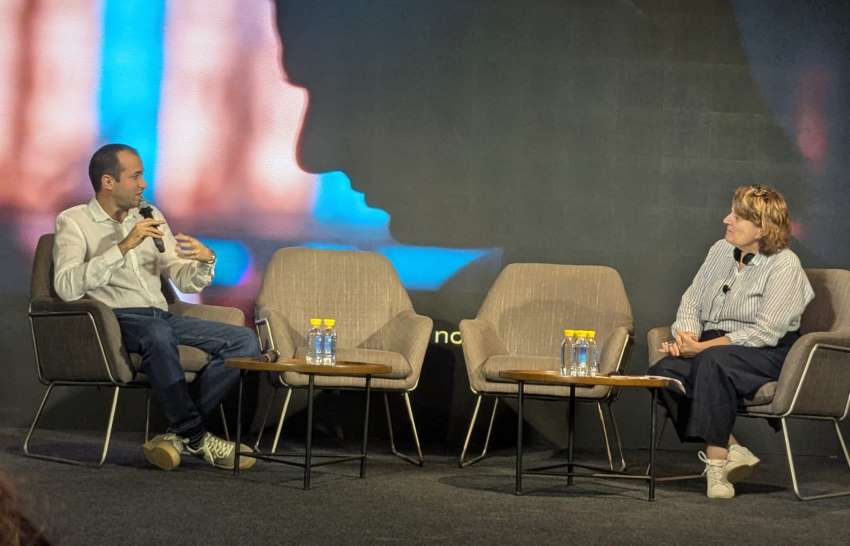FW
Spun yarn exports from India witnessed a decline in October 2015 to just 4.1 per cent in volume terms and 9.5 per cent in value terms. Spun yarn (all kinds) shipments were at 112 million kg worth $310 million or Rs 2,007 crores, implying per unit realisation of $2.78 per kg. This was four cents down from previous month and 41cents down from October 2014. It was also the lowest since February 2015.
China continued to be the largest importer of yarn from India, although average unit value realisation continued to decline settling in the range of $2.78-2.82 per kg on an average. During October, 83 countries imported spun yarn from India, with China accounting for 32 per cent of the total value with imports rising 8 per cent in terms of volume, while declining 6 per cent in value year-on-year. In September, it had clocked a growth of 30 per cent in volume and 13 per cent in value. Bangladesh, the second largest importer of spun yarn, accounted for around 17 per cent of all spun yarn exported from India. However, export to Bangladesh increased 33 per cent in volumes and 17 per cent in value.
Egypt, the third largest importer of spun yarns, saw volume rising 1.1 per cent whereas value was down 14.6 per cent. These three top importers together accounted for close to 55 per cent of all spun yarn exported from India in October. Cotton yarn export was at 91 million kgs in October with 73 countries importing yarn worth $253 million or Rs 1,635 crores in October 2015. The average unit price realisation was at $2.77 a kg, five cents down from previous month and 45 cents down from the same month a year ago. China was the largest importer of cotton yarn from India in October, followed by Bangladesh and Egypt. The top three together accounted for more than 62 per cent of cotton yarn with combined volume at 59 million kg worth $156 million. Their respective unit price realization was $ 2.47 a kg, $3.02 a kg and $2.70 a kg.
Japan, Colombia, Malaysia, Argentina and Bahrain were among the fastest growing markets for cotton yarn, and accounted for 5 per cent of total cotton yarn export value. Eight new destinations were added for cotton yarn export, of which, Honduras, Cambodia, Romania, Saudi Arabia and Estonia were the major ones.
Combed cotton yarn accounted for over 63 per cent of cotton yarn exported in October with volumes at 52 million kgs worth $160 million. Carded yarn export was at 31 million kg. Their respective unit value realisation was $3.09 per kg and $2.41 per kg. Open ended yarn export was at 6.2 million kg at an average price of $1.74 a kg.
Rajasthan has emerged as the largest producer of polyester viscose yarn and synthetic suiting material in the country. Bhilwara and Kishangarh are major power loom centers in the state. Over 20,000 functional looms and over 95 crore meters of different blends of polyester fabrics such as polyester wool, polyester viscose modal, and polyester viscose elastane are produced annually in the state.
Besides PV suiting, the state has also made a name for itself in the processing of low-cost and low-weight fabric. With established backward and forward linkages, Rajasthan’s textile industry offers significant competitive advantages. Jodhpur, Pali, Sanganer, and Kota are better known for traditional handloom, fabric and printing. Jaipur is being increasingly accepted as a fashion garment hub.
The textile hub in Rajasthan provides direct and indirect jobs to nearly seven lakh people and contributes 17 per cent to the state’s exports. Rajasthan has emerged as one of the major cotton cultivating states. It contributes about 85 per cent of the country’s annual wool production.
The state provides textile units various concessions and incentives like interest subsidies ranging from five to seven percent, 50 per cent concession on VAT, and 50 per cent concession on entry tax on capital goods.

Efforts on to regain GSP + plus from EU
While Sri Lanka has emerged the international centre for apparel manufacturing with high-value segment particularly showing growth momentum, in 2010, the European Commission decided to temporarily revoke the low or non-existent tariffs awarded to the country under the Generalised System of Preferences Plus (GSP+) scheme after investigation alleged human rights abuses at the end of the country’s civil war. However, the country does enjoy the standard GSP scheme with fewer, preferential import tariffs.
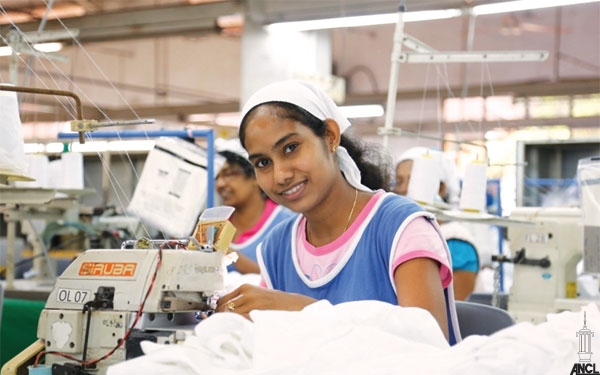
Experts believe with the newly elected reform-oriented administration having the GSP+ scheme back on its agenda, the manufacturing and export sectors will get a renewed boost. Speaking to the media recently, Harsha de Silva, Deputy Minister of Foreign Affairs said by the end of December 2015, the government will be formally reapply for the GSP+.
The EU is a most important export destination with 40 per cent share, for the Sri Lankan players. Industry estimates suggest that exports to the EU rose from $1billion in 2005, when GSP+ was granted, to $1.7billion in 2010. And while exports have been on the rise since then, with $2billion reported last year, industry players are of the opinion that duties on exports are impediments to the export target of $8.5billion-per-annum.
Green signal to GSP+ from the EU
While Sri Lankan government is doing its bit to regain the status, the EU has expressed its willingness to grant the GSP+ status to Sri Lanka. For instance, in its most recent statement on the issue, released in mid-November, the European Council said, “It takes positive note of the progress recently achieved” and called on “the High Representative and the European Commission to continue to engage with Sri Lanka to support its efforts to lay the groundwork for a renewed application for GSP+”.
Amid rising production costs, countries are exploring lower-cost locations such as Southeast Asian countries but many companies are also eyeing South Asia – mainly Sri Lanka as an alternative production base. The country is known as one of the world’s most renowned fashion sourcing locations, with a wide range of global brands - including Victoria’s Secret, Gap, Marks & Spencer and Nike - regularly buying from the island’s apparel manufacturers.
Sri Lanka set in the Indian Ocean has already attracted a number of Hong Kong manufacturers because of its geographical location and comparatively low labour costs. It is also capable of delivering value-added products that could appeal to buyers and importers in the more mature markets, including the EU and US. It is now one of the fastest-expanding economies in Asia, providing a highly conducive business environment for foreign manufacturers. Over the past six years, manufacturing has consistently accounted for around 18 percent of Sri Lanka’s GDP.
Its location, at the centre of a major trade route between Asia and Europe, places Sri Lanka in an advantageous position compared to many other South Asian nations when it comes to connectivity with many of the markets in Europe and the Middle East. This offers a significant edge to those manufacturers whose supply chains extend across the east, but whose major markets are in the west, allowing them substantial cost savings in terms of logistics as well as shorter delivery times.
Clothing workers and unions in Cambodia have launched a new campaign to get a hike in minimum wage. Their goal is to ensure that apparel brands insist on minimum wage to be $177 per month.
The unions have called on fashion brands to make binding commitments to ensure a living wage, decent buying practices, long-term employment contracts and that freedom of association is guaranteed. According to Athit Kong, Vice President of the independent trade union C.CAWDU (partner organization of CNV International), “The proposed increase of $12 is not nearly enough for the basic necessities of clothing workers. The only solution to put an end to hunger wages is being negotiated with the clothing brands, the actual employers and workers themselves.”
Since the end of 2013, Cambodian garment workers have been demanding higher wages. In early 2014 the protest escalated when military took action and people were shot at. Last October, an advisory body to the government decided to raise the minimum monthly wage by only $12 (11 euros) to $140 (130 euros), which was against the demand for minimum wage of $177.
Though the country enjoys the Generalised Scheme of Preferences (GSP) Plus status to the European Union (EU), garment exports from Pakistan continue to deteriorate due to lack of support from the government.
The industry is facing several challenges such as security challenges, energy shortage, high interest rates, lack of policy implementation and high utility prices among many others are leading to a decline in textile exports. According to the World Trade Organisation (WTO), world trade in textiles and clothing increased to $766 billion in 2013 from $454 billion in 2004, a significant increase of 69 per cent despite the fact that the world experienced one of the worst financial crises in 2008-09.
However, Pakistan’s textile export share in the global market decreased from 2.2 per cent in 2006 to 1.8 per cent in 2013. During the same period, Bangladesh’s share jumped from 1.9 per cent to 3.3 per cent, China’s share increased from 27 per cent to 37 per cent and India’s share improved from 3.4 per cent to 4.7 per cent, according to data compiled by the All Pakistan Textile Mills Association (Aptma).
Total exports of Pakistan in fiscal year 2014-15 were $23.6 billion, down 4.8 per cent from $24.8 billion in fiscal year 2010-11. Similarly, textile exports have been hovering around $13 billion for the last five years. Rising gas and electricity rates have been negatively impacting the manufacturing industry.
www.wto.org
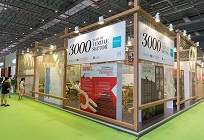
Asia’s premier fair for the home textiles industry concluded last week, with over 43,000 trade buyers visiting the Intertextile Shanghai Home Textiles – Autumn Edition 2015, which was held for the first time at the National Exhibition and Convention Center in Shanghai, spread across 170,520 sq. mtrs.
While the exhibitors and visitors were satisfied with hall layout and arrangements, infrastructure facility to the venue was a bit of a concern, since it is developed outside the city. However, the 1,402 exhibitors from 30 countries and regions compared to 1,334 in 2014 was a high point of the fair’s 21-year history.
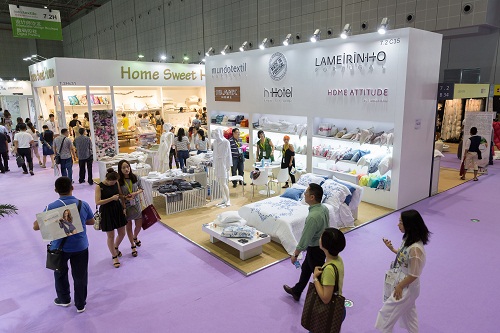
“We’re delighted that our first edition in this new venue was such a success,” said Wendy Wen, Senior General Manager of Messe Frankfurt (HK) as the fair closed on August 28, 2015, adding, “But going beyond the record figures, there were a number of other aspects that were just as pleasing such as the increase in internationality of participants, and the number of first-time overseas exhibitors who were seeking opportunities in the Asian market. We also had a number of new product zones, as well as returning ones, which proved extremely popular, while our new InterDesign programme attracted huge crowds to the trend area, Trend Concept Show and seminars.”
Exhibitors optimistic about China’s prospects
The fair took place against a backdrop of economic uncertainty in China, but this did not appear to dampen the enthusiasm of both new and returning overseas exhibitors that target the Chinese mid-range and high-end markets, with many reporting that they do not expect to be adversely affected. “We don’t anticipate any impact on our sales from the economic situation in China,” said José Grilo, Executive Manager of Grilo Kitchenware, who was exhibiting for the first time under the Associacao Textiles Home From Portugal banner. “People here still have money to spend, and we’re in the premium range, not the mass market, which hasn’t been affected. Buyers here appreciate European brands too,” he added.
In recent years, the fair has placed a big emphasis on providing opportunities for exhibitors that match market demand through relevant product zones, with the new Whole-Home Style and digital printing areas joining the existing Exquisite Europe, Intertextile Design Boutique, editors and carpet & rug zones this year.
Buyers also appreciated the zones, as well as the internationality of the fair. “It’s very beneficial for us to visit the fair as it gathers suppliers from around the world. The International Hall is our favourite as having the different product zones and country pavilions makes it easier for us to locate our targeted suppliers and products,” David Costantini, Director, Profile Fabrics, Australia said.
New InterDesign trend programme - a hit with visitors
The fair’s fringe programme also responds to the demands of the local market, with the new InterDesign programme a response to the increased need for design and trend information from the growing middle and upper classes in China. In addition to the Trend Area, which was designed by the NellyRodiTM Agency, a new Trend Concept Show matched China’s top interior designers with eight leading brands including LaCanTouch, Brilliant & Refined, Designers Guild, Uniwal, Jean Paul Gaultier, Pt, Dedar and JAB Anstoetz to bring the trends in the Trend Area to life.
The next Autumn Edition will take place from August 24 to 26, 2016, while the Spring Edition returns next year from March 16 to 18, 2016.
According to a joint study conducted by Bangladesh Institute of Labour Studies (BILS) and German-based Friedrich Ebert Stiftung, over 52 per cent labour unrest that took place in Bangladesh were a result of over dues of wage and overtime allowance. 18.8 per cent agitation was for hike in wage and other benefits, while 12.1 per cent for disputes over employment contract, it added.
The garment sector witnessed some 165 incidents of disputes out of the total 246 in 2014, said Professor Jakir Hossain of Rajshahi University in his study. Professor Hossain presented its findings at a seminar titled 'State of labour tripartitism in Bangladesh's RMG sector and the scope of harmonious industrial and labour relations', held in the capital recently. Out of the total 230 industrial disputes in 2013, 199 incidents took place in garment sector, the study revealed.
Majority of the disputes could have been resolved, if there had been an effective tripartite solution system with equal representation of the owners, the workers and the government, it noted. But, in case of Bangladesh, an effective tripartite mechanism cannot work, as representations of the owners and the government are stronger and more organised than that of the workers.
Roy Ramesh Chandra, a BILS member, in his speech said, "There is no lone ministry for the country's $24 billion garment sector. When any dispute arises in the sector, a number of ministries and agencies try to resolve it. At the end, little effective measures are taken. If we can capture 10 per cent of China's market share in the global market, which is about 37 per cent, our export will reach $50 billion very soon."
www.bils-bd.org
Jeanologia has managed to eliminate the PP (potassium permanganate) Spray of industrial production processes of jeans by a laser solution. This is the latest development that the company showcased at Denim by Première Vision Barcelona on November 18 and 19, 2015.
The PP Spray, used to create located used areas in a pair of jeans was the last polluting and harmful technique to the health of workers and the environment that had no substitute yet. The Spanish developer of sustainable technology for garment finishing company invented the new laser technique to eliminate all dangerous techniques in jeans finishing industry.
In 2011, Jeanologia eliminated the use of sand blast with its Light Solutions; in 2012 ended stonewash by Light Stoner and in 2013, the Light Scraper of Jeanologia eradicated manual scraping. And now its light of laser, Jeanologia has ended four adverse health and environmental processes used in the textile industry.
The PP Spray is the most dangerous practice for the health and safety of workers. It is done with a spray-gun that transforms chemicals into micro-particles absorbed by people who perform this technique although precautions taken and causing them lung problems.
The technology that eliminates the use of PP Spray - Light PP Spray, will be used exclusively for a year by Jeanologia’s 200 partners in 47 countries representing 40 per cent of world production of denim.
www.jeanologia.com
Readymade garment exporters have demanded lowering of the shipment costs to export their shipment through the Pangaon Inland Container Terminal (ICT).
The country's industry bodies such as members of Bangladesh Garment Manufacturers and Exporters Association (BGMEA) and Bangladesh Knitwear Manufacturers and Exporters Association (BKMEA), have held meetings with the Pangaon ICT authorities to express their concerns such as high cost of container vessels, irregular schedule and lack of container vessels, absence of freight forwarders, lack of stevedoring and other logistic supports in and around the terminal.
According to the industry insiders, most of the exporters and foreign buyers import and export garment products and related raw materials to and from Bangladesh through their appointed freight forwarders, but since most of them are stationed at Chittagong and not enlisted with Pangaon ICT, which creates a lot of hassles in handling the consignments at the newly constructed ICT.
Sources say that after all the consignments have been cleared by customs authorities at Chittagong port after checking all necessary documents, including LCs (Letter of Credits) and BL (Bill of Lading) that bear the name of Chittagong as the port of call, the containers need further permission for Pangaon ICT, which also involves some extra expenses. The loading and unloading of consignments from Chittagong port for Pangaon ICT also require extra charges and labour costs.
The country's first inland container terminal at Pangaon on the riverbank of Buriganga was inaugurated in November 2013 with a view to easing the pressure of freight traffic on the busy Dhaka-Chittagong highway and rail routes. Built at a cost of Tk 1.54 billion at Keraniganj, the terminal has remained non-functional.
www.bgmea.com.bd
According to the All Pakistan Textile Mills Association (APTMA) Chairman Aamir Fayyaz unemployment of textile workers is on the rise in Punjab region of Pakistan because of the delay in the announcement of textile package by the government. He said that over two dozen mills have been totally closed down in the province while a large number of mills have reduced to their operations to two shifts, which has left thousands of textile workers jobless.
He said that the exports data of last four months has indicated a continuous decline in textile exports, however the government has been delaying the announcement of textile package since August. Despite Prime Minister Nawaz Sharif’s assurance, there is no news of any textile package by the government yet, he added.
He further said that though the country’s textile industry is considered to be growth engine and employment generator in the region, the government is showing no positivity towards the textile industry. It is not even announcing a long term policy to revive the textile industry against threat from countries like India, Bangladesh and China, where extensive support is being extended to the textile industry for job creation.
In 2020, he said, the projected growth of Bangladesh, India and China would be 6 per cent, 7 per cent and 56 per cent in the world market against 1.4 per cent of Pakistan, which stands at 1.6 per cent at present.
Earlier, APTMA observed a "Black Day of Unviability of Textile Industry of Pakistan" from Karachi to Peshawar on October 14, 2015. Addressing a press conference, Tariq Saud, Central Chairman APTMA had said that Pakistan's textile industry was facing worst-ever crisis of its history and thus unable to compete in the world market.
www.aptma.org.pk


